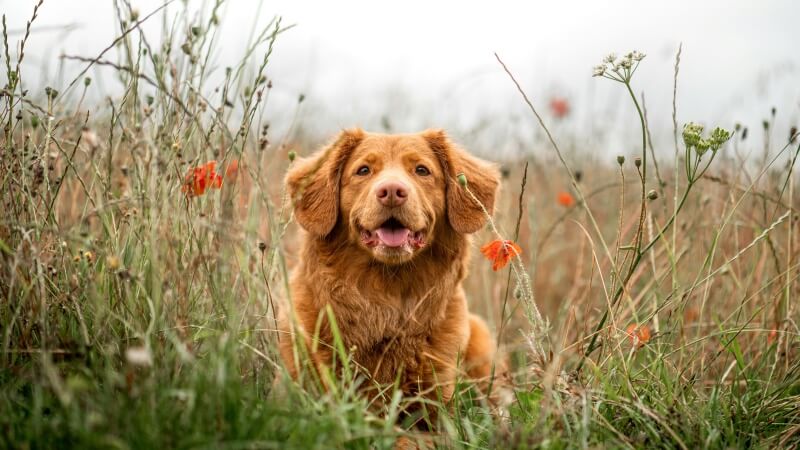
How To Craft A Cozy Cat Vest From Fabric Strips
Have you ever seen your feline friend lounging around and thought, “What could possibly make this picture more adorable?” The answer is simple: a cat

The concept of a dog cooling vest is a game-changer for pet owners looking to enhance their dog’s comfort during those relentless summer days.
Imagine your furry friend enjoying the outdoors, unfazed by the heat, thanks to a garment you’ve lovingly crafted.
This guide will walk you through the process of creating a dog cooling vest, from gathering materials to the final touches, ensuring your pet stays cool and comfortable in the heat.
Before diving into the creation of your dog cooling vest, it’s essential to lay the groundwork. This initial phase is all about ensuring you have everything you need for a successful project.
From selecting the right materials to taking precise measurements of your dog, preparation is key.
Think of this stage as setting the stage for a masterpiece; every detail matters, from the fabric’s breathability to the fit’s comfort.
Let’s start by exploring how to choose the best materials, measure your dog accurately, and prepare your sewing area for the task at hand.
Selecting the appropriate materials is crucial for the comfort, efficiency, and durability of the dog cooling vest. The choice of fabric and cooling elements directly impacts the vest’s effectiveness in keeping your dog cool.
Getting your dog’s measurements right is crucial for a comfortable and functional vest.
Measure the chest for a snug fit, the neck for comfort in wearing, and the back length to ensure the vest covers the necessary areas for optimal cooling.
Accurate measurements are like the blueprint of your project; they guide the cutting and assembly process, ensuring the finished vest is just the right size for your dog.
Turning your prepared materials into a dog cooling vest is an exciting journey. This stage is all about piecing everything together, inserting the cooling elements, and ensuring the vest is as comfortable as it is functional.
The creation process is where your project starts to take shape, transforming from simple fabric and materials into a garment that will provide relief and comfort to your dog in the heat.
The cooling component is the heart of the vest, responsible for the actual cooling effect. Designing pockets that can securely hold the cooling elements is crucial.
These pockets should be evenly distributed across the vest to ensure that your dog benefits from the cooling effect without any discomfort or imbalance.
Consider using Velcro or zippers for these pockets, as they offer flexibility in removing or replacing the cooling elements, making the vest more versatile and easier to maintain.
Piecing together the vest involves more than just sewing; it’s about ensuring that every component works together to provide maximum comfort and cooling.
The positioning of the cooling element pockets is crucial. They should be easily accessible for when you need to insert or remove the cooling packs but secure enough to ensure they stay in place as your dog moves.
The final assembly is a testament to your craftsmanship, showcasing a functional and aesthetically pleasing dog cooling vest that your dog will love.
While the primary goal of the dog cooling vest is to keep your dog comfortable during hot weather, there are several important considerations to keep in mind throughout the crafting process.
These include ensuring the vest is safe for your dog to wear, it provides the intended comfort and cooling effect, and it’s easy to maintain for long-term use.
The safety of your dog is paramount when creating a dog cooling vest. Choosing non-toxic materials and regularly inspecting the vest for wear and tear are critical steps in ensuring your dog’s safety.
The materials used should be safe for your dog, even if they decide to chew on the vest.
Regular inspections help identify any potential hazards, such as loose threads or damaged cooling packs, that could harm your dog.
Maintaining the dog cooling vest is essential for its longevity and effectiveness. Regular washing helps keep the vest clean and hygienic, preventing any buildup of dirt or bacteria that could affect your dog’s skin.
Additionally, inspecting and replacing the cooling elements as needed ensures that the vest continues to provide the cooling effect that your dog relies on during hot weather.
Proper maintenance not only extends the life of the vest but also ensures that it remains a safe and comfortable option for your dog.
Crafting a dog cooling vest is a rewarding experience that not only provides your dog with relief from the heat but also strengthens the bond between you and your pet.
By following the steps outlined in this guide and considering the safety, comfort, and maintenance of the vest, you can create a functional and stylish garment that will keep your dog cool and comfortable during the hot summer months.
Remember, a cool dog is a happy dog, and with your homemade dog cooling vest, your pet will surely enjoy summer in comfort and style.
Can I use any type of fabric for the outer layer of the vest?
While you have some flexibility in choosing the fabric for your dog cooling vest, it’s crucial to prioritize materials that are lightweight, breathable, and durable. Fabrics such as polyester or a blend that includes nylon can also be good choices, especially for their quick-drying properties and resistance to wear. Avoid heavy or non-breathable fabrics that could trap heat, making the vest counterproductive.
How often should I replace the cooling elements inside the vest?
The lifespan of cooling elements varies depending on their type and frequency of use. For gel packs, check the manufacturer’s guidelines, but generally, if you notice any signs of wear or a decrease in cooling efficiency, it’s time for a replacement. Homemade cooling elements, like frozen rice bags, can be used repeatedly but should be replaced if they show signs of degradation or if the rice begins to smell.
Is it safe to leave my dog unattended while wearing the cooling vest?
While cooling vests are designed to be safe, it’s always best to supervise your dog when they’re wearing it, especially the first few times. This supervision ensures they’re comfortable and not trying to chew or remove the vest, which could potentially lead to ingestion of non-edible parts. If your dog is resting in a shaded, secure area, short periods of unsupervised time can be okay once you’re confident in the vest’s fit and your dog’s comfort.
Can the cooling vest be used for breeds with thick fur?
Absolutely! Dogs with thick fur often suffer the most in hot weather, making them ideal candidates for a cooling vest. The vest works by allowing heat to escape from their body more efficiently, thanks to the cooling elements and the breathable fabric, providing relief from the heat regardless of their fur density. Ensure a proper fit to maximize the cooling effect without restricting their natural movement.
How do I clean the dog cooling vest, and how often?
Cleaning instructions can vary depending on the materials used, but most vests can be gently hand-washed with mild detergent and cold water. Avoid using hot water or harsh chemicals, as these can damage the fabric or cooling elements. As for frequency, washing the vest after every few uses or when it becomes noticeably dirty is a good rule of thumb. Always allow the vest to fully air dry before storing it away or using it again to prevent mold or mildew growth.


Have you ever seen your feline friend lounging around and thought, “What could possibly make this picture more adorable?” The answer is simple: a cat

The moment you consider a dog hunting vest for your adventurous companion, you’re stepping into a world where safety meets functionality. This vest is not

When you first consider crafting a tactical dog vest, it’s not just about embarking on a fun DIY project; it’s about ensuring your furry companion’s

Ever thought about giving your cat tactical vest an upgrade? Yes, you heard it was right—a. A tactical vest for your feline friend, not just

Have you ever seen your feline friend lounging around and thought, “What could possibly make this picture more adorable?” The answer is simple: a cat

The moment you consider a dog hunting vest for your adventurous companion, you’re stepping into a world where safety meets functionality. This vest is not

The concept of a dog cooling vest is a game-changer for pet owners looking to enhance their dog’s comfort during those relentless summer days. Imagine

When you first consider crafting a tactical dog vest, it’s not just about embarking on a fun DIY project; it’s about ensuring your furry companion’s
Secure and Empower, Walk Responsibly
Copyright © 2025pettacticalharness. All Rights Reserved.